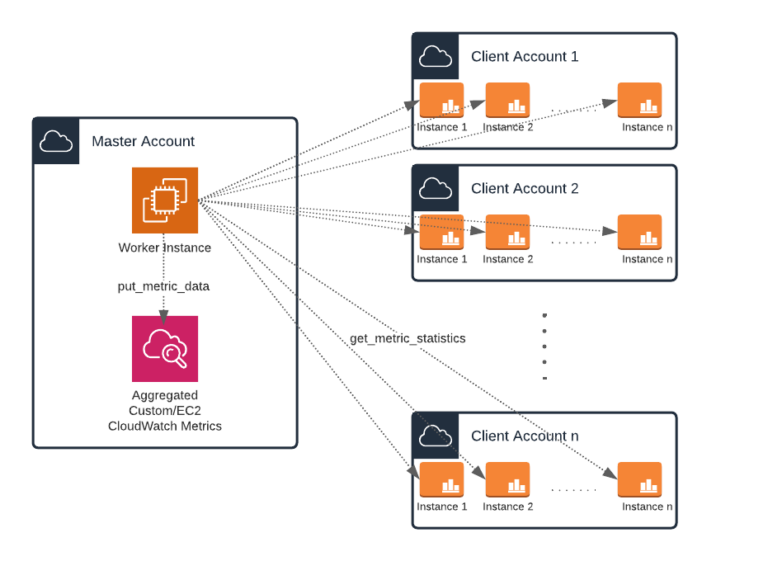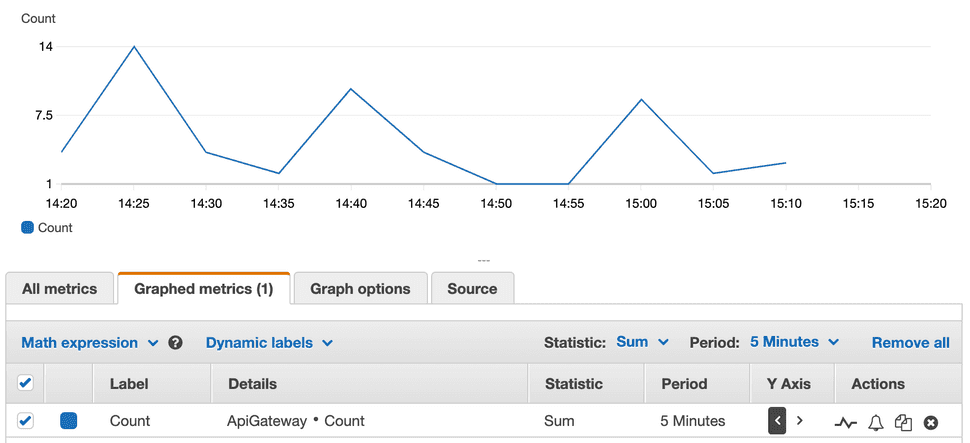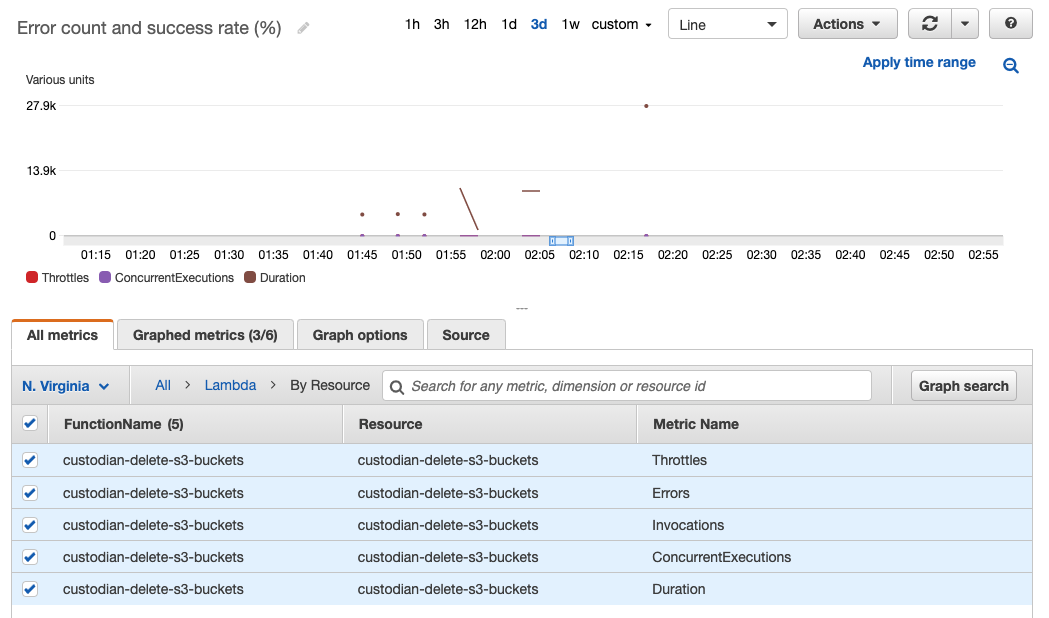Do you use AWS CloudWatch to monitor your applications and services in the cloud? If so, you might be interested in learning more about the different ways you can use CloudWatch metrics to gain insights into your system's performance and behavior. In this article, we'll explore ten different images related to CloudWatch metrics, and discuss some best practices and tips for using them effectively.
Image #1: AWS CloudWatch - Aggregate View of Multi-Account CloudWatch Metrics
The first image we'll look at shows an aggregate view of CloudWatch metrics across multiple AWS accounts. This image is particularly useful if you have a large number of accounts and want to see a high-level view of your overall system performance. Some tips for using this image effectively include:
- Create custom dashboards to visualize the most meaningful data for your needs.
- Make use of the grouping feature to organize your metrics by category, such as "application metrics", "network metrics", and so on.
- Be mindful of the data retention settings, as this can impact the amount of data available for analysis.

Image #2: CloudWatch Metrics & Alarms Reloaded - marbot
The second image shows a set of CloudWatch metrics and associated alarms in the marbot monitoring dashboard. This can be a great starting point for monitoring your applications and services, as you can easily see which metrics are most relevant and set up alarms accordingly. Some best practices for using this image include:
- Use the AWS Management Console or the AWS CLI to create custom metrics, depending on your preferences and skill level.
- Configure alarms to notify you when metrics exceed certain thresholds or exhibit unusual behavior.
- Be sure to test your alarms to make sure they are working as expected.

Image #3: Cumulative Sum of AWS CloudWatch Metric
The third image demonstrates how to create a cumulative sum of CloudWatch metrics using the AWS CLI. This can be a helpful technique when you want to track a metric over time and see how it changes as your system evolves. Some tips for using this image include:
- Make sure you have the necessary permissions to create custom metrics and run CLI commands.
- Consider using cron jobs or other scheduling mechanisms to automatically collect and store metric data.
- Use the CloudWatch API or SDK to retrieve and analyze your metric data programmatically.

Image #4: Setting Up CloudWatch Alarms with Serverless
The fourth image showcases how to set up CloudWatch alarms with the Serverless framework. This is a great option if you are using Serverless to deploy and manage your applications, as it allows you to easily monitor and alert on important metrics. Some best practices for using this image include:
- Familiarize yourself with the Serverless framework and its CloudWatch integration features.
- Choose the most relevant metrics for your use case, and configure alarms to trigger when those metrics fall outside acceptable thresholds.
- Use the Serverless CLI to deploy and manage your alarms alongside your applications.

Image #5: How to Create CloudWatch Custom Metrics and Application Logs
The fifth image demonstrates how to create custom CloudWatch metrics and log data using AWS Lambda. This can be a powerful technique for gathering and analyzing data specific to your application, and can help you gain insights into how your users are interacting with your system. Some tips for using this image include:
- Make sure you have the necessary permissions to create and deploy AWS Lambda functions, and to create custom CloudWatch metrics.
- Choose the most relevant data points to log and monitor, and format them correctly for easy analysis.
- Use Lambda's built-in support for CloudWatch Logs and Metrics to gather and analyze your data in real-time.

Image #6: CloudWatch Custom Metrics
The sixth image demonstrates a custom CloudWatch metric for tracking error rates in an application. Custom metrics are a great way to gather and analyze data that is specific to your use case, and can help you gain insights into your application's performance and behavior. Some best practices for using this image include:
- Make use of CloudWatch's built-in support for custom metrics, or create your own metrics using Lambda or the AWS CLI.
- Store custom metric data in a reliable and scalable data store, such as Amazon S3 or Amazon DynamoDB.
- Use CloudWatch dashboards or APIs to retrieve and visualize your custom metric data.
Image #7: CloudWatch Metrics Dashboard
The seventh image shows a CloudWatch metrics dashboard built using Grafana. This is a useful way to visualize and understand your system performance data, and can be customized to meet your needs. Some tips for using this image include:
- Choose the most relevant metrics to display on your dashboard, and group them by category or function.
- Consider using different chart types, such as line charts or bar charts, to better visualize your data.
- Use Grafana's built-in support for AWS CloudWatch to collect and display your metric data.

Image #8: Integrating CloudWatch Metrics in Under 60 Minutes
The eighth image provides a step-by-step guide for integrating CloudWatch metrics into your AWS environment in less than 60 minutes. This can be a helpful resource if you are just starting out with CloudWatch and want to get up and running quickly. Some best practices for using this image include:
- Familiarize yourself with the AWS Management Console and the AWS CLI, and choose the tools and interfaces that work best for you.
- Create custom CloudWatch metrics and alarms that are relevant to your use case, and test them thoroughly to ensure they work correctly.
- Monitor your application performance regularly, and make adjustments as needed to improve performance and reliability.

Image #9: CloudWatch Metrics
The ninth image provides an overview of CloudWatch metrics and how they can help you monitor and analyze your system performance. It is a good starting point if you are new to CloudWatch and want to learn more about the different types of metrics available. Some tips for using this image include:
- Familiarize yourself with the different metric types, such as high-resolution custom metrics, detailed monitoring metrics, and log data metrics.
- Choose the most relevant metrics for your use case, and configure alarms to trigger when those metrics fall outside acceptable thresholds.
- Use CloudWatch APIs or SDKs to retrieve and analyze your metric data programmatically.

Image #10: Securing Your Cloud Environment with Cloud Custodian
The final image showcases how to use Cloud Custodian to secure your cloud environment using CloudWatch metrics. This can be a helpful technique if you need to enforce compliance policies or protect against security threats in your AWS environment. Some tips for using this image include:
- Familiarize yourself with Cloud Custodian and its support for CloudWatch metrics.
- Choose the most relevant policies to enforce, and configure alarms to notify you when those policies are violated.
- Use Cloud Custodian APIs or SDKs to retrieve and analyze your policy enforcement data programmatically.

We hope you found these images and tips for CloudWatch metrics useful! Whether you are just getting started with CloudWatch or are a seasoned veteran, there are always new tricks and techniques to learn. So don't be afraid to experiment and try new things - you might just discover a better way to monitor and optimize your AWS applications and services.